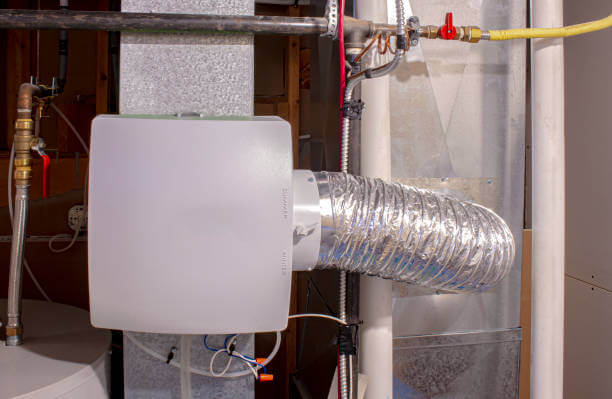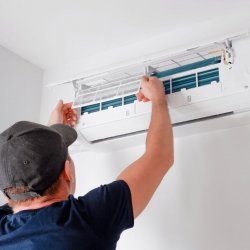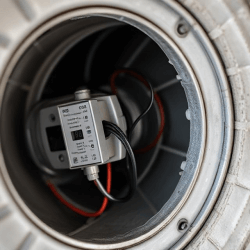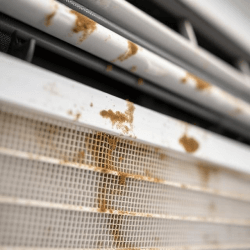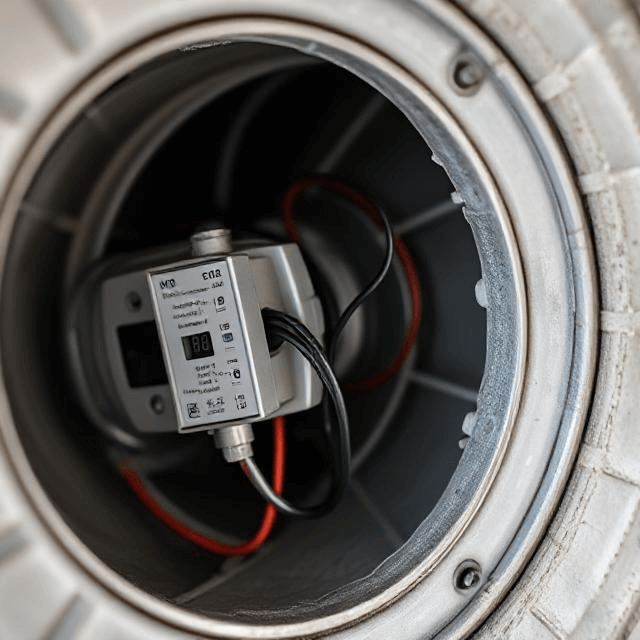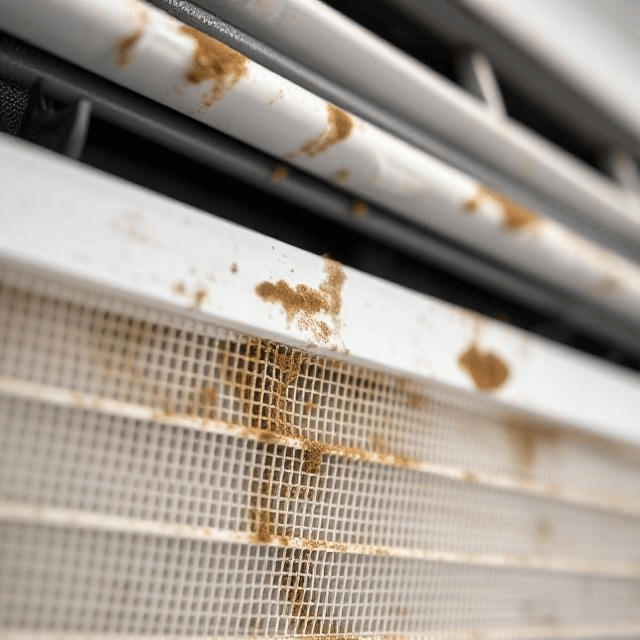Balancing indoor humidity is crucial for maintaining high-quality indoor air, which directly influences your home’s health, comfort, and longevity.
Excessive or insufficient humidity can cause respiratory problems, discomfort, and even damage the structure of buildings.
This guide will explore effective strategies for achieving optimal indoor humidity with Season Control HVAC. Together, we will ensure a healthier and more comfortable living environment.
Understanding Humidity
Humidity, the amount of water vapor in the air, shapes our indoor environment’s comfort and healthfulness. It’s not just a number on your weather app; it’s a key factor affecting everything from your skin’s health to the integrity of your home’s structure.
There are two main types of humidity to be aware of:
- Absolute Humidity tracks the amount of water vapor in the air, regardless of temperature, typically expressed in grams per cubic meter.
- Relative Humidity is the percentage of water vapor in the air compared to the maximum amount the air can hold at a given temperature. It’s what we commonly refer to when talking about humidity levels indoors.
Ideally, the humidity levels should range between 30% and 50%. This range maintains comfort while minimizing health risks and protecting the building’s structure.
You can use hygrometers to measure the relative humidity in your home.
Smart Thermostats and HVAC Systems have built-in humidity sensors, which provide real-time data. They allow you to adjust settings for optimal indoor air quality.
The Impact of Imbalanced Humidity
Imbalanced humidity levels, whether too high or too low, can adversely affect health, comfort, and the integrity of buildings and their contents.
Understand these impacts to maintain an optimal living environment.
Effects of High Humidity
- Mold and Mildew Growth: Excess moisture creates an ideal breeding ground for mold and mildew. It can lead to potential health risks and damage to surfaces and structures.
- Dust Mites: High humidity levels contribute to the proliferation of dust mites, common allergens that can increase asthma and allergies.
- Health Issues: Prolonged exposure to high humidity can lead to heat exhaustion, dehydration, and increased vulnerability to respiratory infections.
Effects of Low Humidity
- Respiratory Symptoms: Dry air can irritate the airways, leading to coughing, sore throat, and aggravated symptoms for those with asthma or allergies.
- Irritated Skin: Low humidity strips the skin of moisture, causing dryness, irritation, and worsening of skin conditions like eczema.
- Static Electricity: Reduced moisture in the air increases static electricity. This can be a nuisance and even damage electronic devices.
Impact on Building Materials and Furniture
- High Humidity: This can cause wood to warp, paint to peel, and metal to corrode, affecting the durability and appearance of building materials and furniture.
- Low Humidity: Wood and other materials may crack or shrink, leading to gaps in flooring and cabinetry or damage to musical instruments and art.
Sources of Humidity Imbalance
Internal and external factors contribute to humidity imbalances. Identifying them ensures their effective management and control.
Internal Sources
- Daily Activities: Cooking, showering, and drying clothes indoors can increase indoor humidity.
- Heating Systems: Some types of heating can dry out the indoor air, reducing humidity levels.
- Plants: Indoor plants expel moisture into the air through transpiration, affecting humidity levels.
- Leaking Pipes or Damp Basements: These can contribute to higher humidity levels by introducing additional moisture into the air.
External Sources
- Weather and Seasonal Changes: Humidity levels naturally fluctuate with the seasons, with higher levels typically in summer and lower levels in winter.
- Geographical Location: Areas close to large bodies of water or with a humid climate tend to have higher outdoor humidity levels, which can affect indoor levels.
- Infiltration: Outdoor air that enters the building through windows, doors, or other openings can bring in moisture, influencing the indoor humidity.
Building Design and Ventilation Issues
- Poor Ventilation: Inadequate ventilation traps moisture inside, leading to higher humidity levels.
- Insulation and Sealing: Overly tight sealing can prevent moisture from escaping, while poor insulation can lead to condensation, affecting humidity levels.
Strategies for Balancing Humidity
Improve Ventilation
Improve the ventilation in your home to control humidity levels.
Exhaust fans in the bathroom and kitchen can reduce moisture accumulation by expelling humid air outside. You can also open windows when the weather permits to encourage cross-ventilation. This will refresh the indoor air and reduce excess humidity.
Utilize Humidifiers and Dehumidifiers
You can balance the indoor humidity by using humidifiers and dehumidifiers.
A dehumidifier can remove the extra moisture in areas prone to dampness, protecting your home from mold growth and allergens.
Conversely, humidifiers can add moisture to the air in dry conditions, especially during winter. They can prevent dry skin, irritated sinuses, and respiratory discomfort.
Monitor Indoor Humidity Levels
You should monitor the humidity levels in your home to make adjustments when needed. Tools like hygrometers and smart thermostats provide accurate indoor humidity readings, allowing for timely interventions.
Depending on the readings, you might decide to activate a dehumidifier, humidifier, or improve ventilation to restore ideal humidity levels.
Manage Water and Moisture
Addressing water and moisture at its source can prevent imbalances in indoor humidity.
This means fixing any leaks in pipes, faucets, or the roof as soon as they are detected.
Additionally, ensuring your home is well-waterproofed, particularly in basements and crawl spaces, can prevent moisture from seeping in and raising humidity levels.
Maintain Heating and Cooling Systems
Regular HVAC system maintenance ensures it operates efficiently, helping to maintain desired humidity levels.
During hot, humid months, using air conditioners helps remove excess moisture from the air, while in colder months, you can use heating systems to avoid overly dry air.
Use Plants Wisely
Plants can impact indoor humidity levels through transpiration, releasing moisture into the air.
You can naturally lower moisture levels by choosing houseplants that absorb humidity, such as ferns and orchids. Conversely, if you need to add humidity, choose plants that release more water vapor.
Consider Your Home’s Structure
Proper insulation and sealing techniques can prevent excessive moisture from entering or leaving your home, contributing to a stable indoor humidity level.
Investing in advanced ventilation systems like ERVs (Energy Recovery Ventilators) or HRVs (Heat Recovery Ventilators) can provide a more controlled and comfortable indoor climate for homes in extremely humid or dry regions.
These systems efficiently manage air exchange and humidity levels, ensuring optimal indoor conditions.
Seasonal Adjustments
Be prepared to make seasonal adjustments to your humidity management strategy. Humidity levels naturally fluctuate with the changing seasons—higher in summer and lower in winter.
Recognizing these patterns and adjusting your use of humidifiers, dehumidifiers, and ventilation will help maintain balanced humidity year-round.
Adapt Lifestyle Habits
Your daily activities contribute to indoor humidity levels.
Simple lifestyle changes can reduce excess indoor humidity. This includes using lids on pots while cooking to reduce steam, drying clothes outdoors when possible, and taking shorter showers.
How Your HVAC System Help Maintain the Right Humidity Levels?
Your HVAC system can help maintain the right humidity levels by regulating the moisture in the air.
During hot, humid months, it cools your home and removes excess moisture through condensation. Certain HVAC systems can add moisture to the air in cooler, drier months if equipped with a built-in humidifier.
Additionally, professional HVAC maintenance services, including regular filter changes and system checks, ensure it effectively balances your indoor humidity for a more comfortable and healthy living environment.
Ready to Optimize Your Home’s Humidity?
Maintaining balanced humidity levels is essential for a healthy, comfortable home environment. By understanding and managing indoor humidity, you can protect your health, preserve the integrity of your home, and enhance your overall comfort.
If you’re looking to optimize your indoor air quality with effective humidity control solutions, don’t hesitate to reach out.
Call Season Control HVAC today at (818) 514-4914 for expert guidance and indoor air quality services tailored to your needs. Let’s create a more comfortable living space together.



